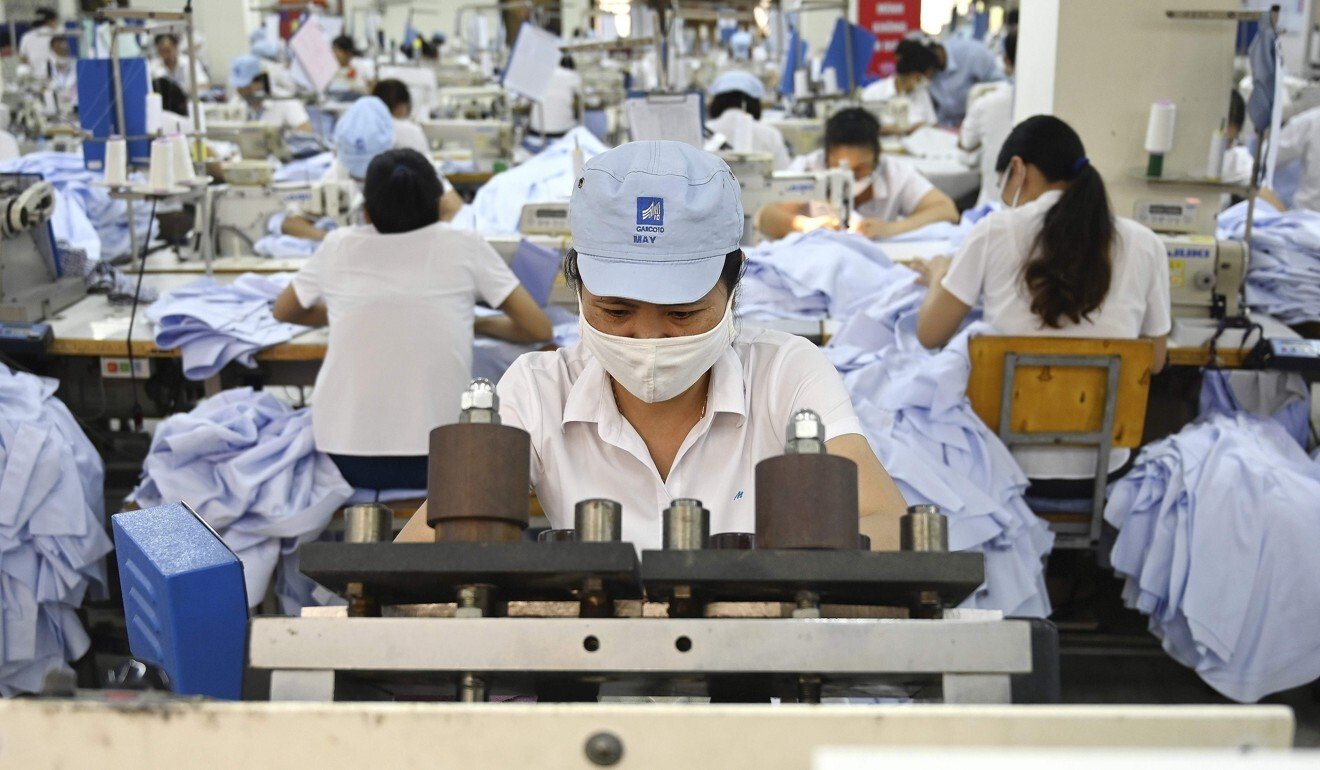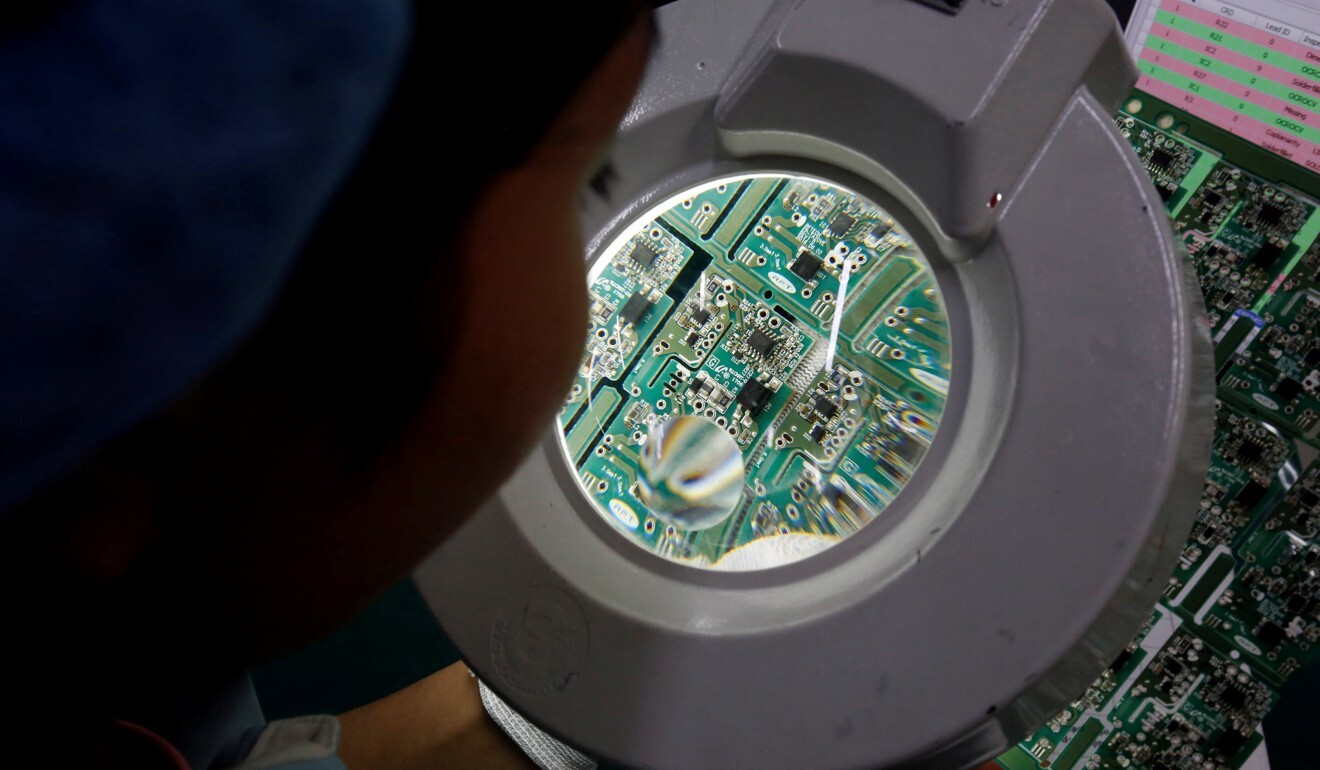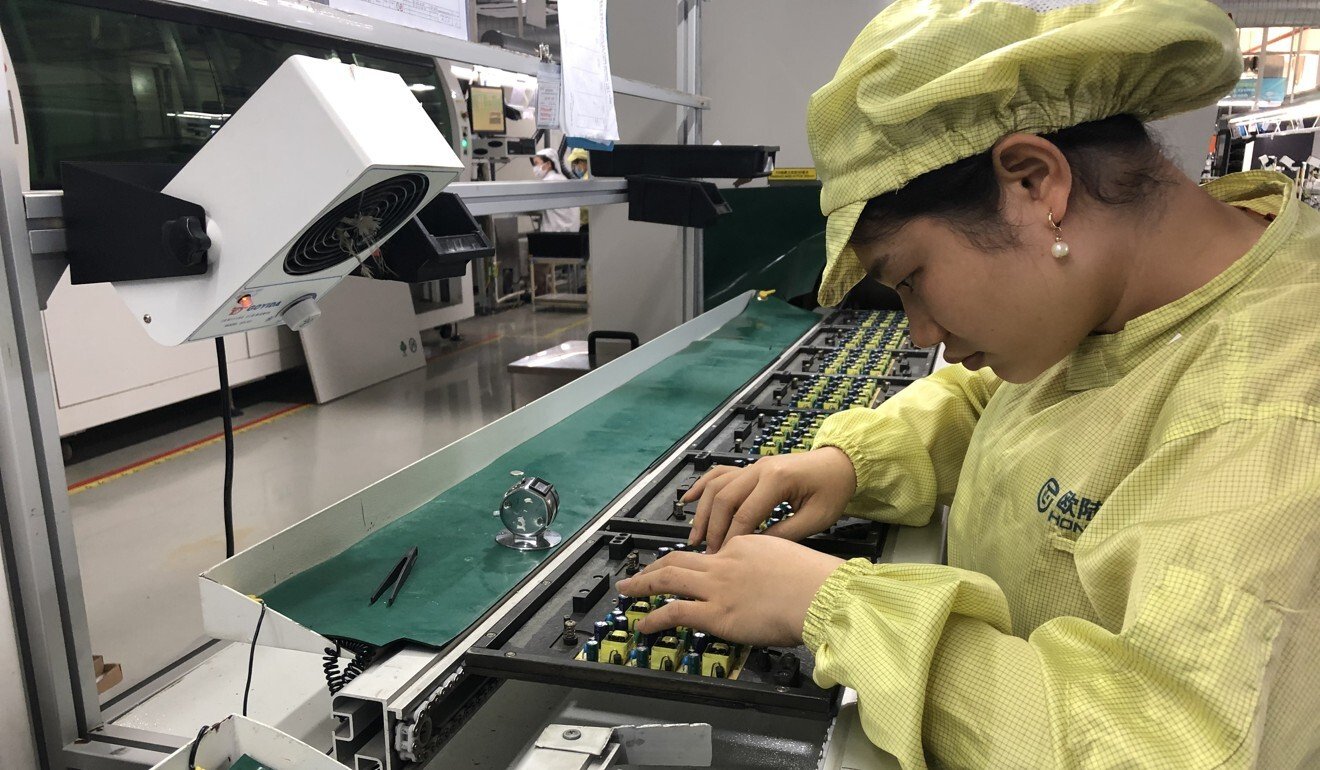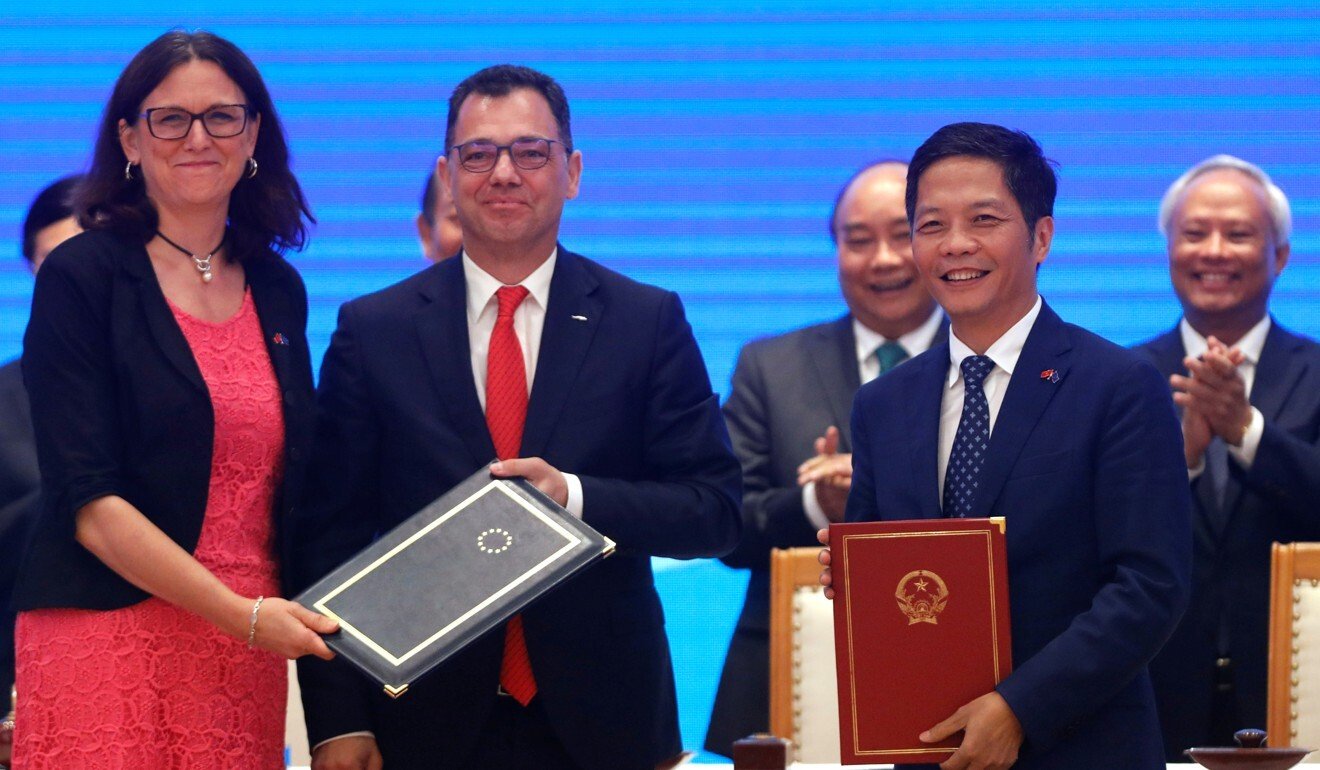- * Agreement to slash tariffs should boost European investment in Asia’s ‘export rock star’, but is no silver bullet for post-coronavirus recovery, experts say
- * And don’t expect an exodus of manufacturers from China to Vietnam, they add. Hanoi relies on its neighbour and can’t replicate its scale even if it tried



The deal will cut or eliminate 99 per cent of tariffs on goods traded between the two. In the case of textiles and apparel, 77.3 per cent of tariffs will be eliminated after five years and the remaining 22.7 per cent after seven years.
According to the chairman of the European Chamber of Commerce in Vietnam, Nicolas Audier, the EVFTA comes “at an advantageous moment for European companies”.

Its British founder, Hannah Jefferys, who is also in talks with German and Portuguese companies, said: “Customers will be offered better prices and get better mark-up from our products. The FTA will make exports more feasible as many costs will be removed.”
Like many businesses affected by the pandemic, sales at Saigon Cider have taken a hit during the global lockdown. “Ours is a luxury product. When the economy goes down, people tend to go for the mass-market and cheaper products,” Jeffreys said.
A six-pack of cider is priced at 510,000 dong, or about US$21, in a country where draught beer is sold for about US$1.50 per litre.
In late January, Vietnam not only shut its borders with China but also suspended visas to prevent foreigners from entering starting mid-March.
Audier, a lawyer who has worked in Vietnam since 1995, added: “It can be seen as a road map to recovery, one which gives European companies greater access to one of the world’s fastest-growing economies at a time when few others are open for business.”
He said businesses in Vietnam had been able to resume quickly due to the country’s swift and successful handling of the pandemic.
Audier also expected to see an increase in EU investments in the country in the months ahead.
“European companies will soon have better access to Vietnam’s growing middle-class consumer market, as well as its thriving service sectors, such as higher education, telecommunications and banking,” he said.

RELIANT ON CHINA
However, Trinh Nguyen, a senior economist for Asia at Natixis, a French corporate and investment bank, who once referred to Vietnam as “an export rock star of Asia”, said the increase in Vietnamese exports as a result of the EVFTA was likely to be offset by its reliance on Chinese imports for production.
To reduce this dependency, Nguyen said the country needed to improve its tertiary education and push for the training and localisation of suppliers.
Natixis economists say Vietnam’s dependency on Chinese imports has risen over the years. Its linkages with China increased substantially from 2014 to 2018 as compared to other Asean countries.
According to Vietnamese customs figures, Vietnam’s textiles and garment production relies heavily on China as a source of fabric. Last year, Vietnam exported US$1.59 billion worth of textiles and garments to China and imported US$11.52 billion worth of input materials.
Nguyen said the free-trade deal stipulated rules of origin for textiles that would force more of the supply chain to move to Vietnam, although that was a short-term worry for the sector as it was currently cheaper to import input materials. “I expect more inflows of investment to raise the domestic input in the economy,” Nguyen said.
“Vietnam will only be able to absorb sectors that it targets, such as textile, footwear and electronics. And even within the electronics sector, production that requires massive mobilisation of the labour force, Vietnam cannot achieve the scale that China has as well as the existing supply linkages,” Nguyen said.

Agreeing, Deng Yingwen, the director of the Centre for Southeast Asian Studies in Jinan University in China’s southern Guangdong province, said that an influx of foreign investors and manufacturers pulling out from China and relocating to Vietnam was unlikely.
“Many foreign manufacturers are likely to maintain their operations in China while turning to or expanding their operations in Vietnam,” Deng predicted.
Deng dismissed speculation that Vietnam could replace China as the “world’s factory”, especially among mid- to low-end enterprises, in the midst of the ongoing US-China trade tensions.
“Compared to China, Vietnam’s market is very small with a population of 100 million, which is only a little larger than [China’s southwestern autonomous region of] Guangxi. Foreign companies are unlikely to relocate from China due to the vast Chinese markets and large production capacities,” Deng said.
Peking University School of International Relations professor Zhai Kun said even though the EVFTA bestowed considerable benefits on Vietnam, the country should continue strengthening its manufacturing and quality control procedures, especially in the aquatic product and textile sectors.
“This will allow Vietnam to meet the stricter requirements of the quality of goods imported into the EU, and to enjoy tariff-reduction requirements,” said Zhai.
The wages of Chinese manufacturing workers are three times those of Vietnam
Zhai said China itself had begun to relocate some aspects of its operations and supply chain to Vietnam, even before the start of the pandemic and the ratification of the EVFTA.
“Vietnam is seen as the most ideal destination for labour-intensive factories in China due to its advantages in location, preferential measures for foreign investment, and labour productivity,” Zhai said.
However, Zhai said not all manufacturing sectors could easily be transferred to Vietnam.
“The wages of Chinese manufacturing workers are three times those of Vietnam, but Chinese workers are also more skilled. China’s scale cannot be replicated. There are more migrant workers in China than Vietnam’s population combined,” Zhai said.
Moreover in recent years, China has been exploring what it calls a high-quality development path and has chosen to focus on developing its value-added industries.
“It is home to the world’s leading companies in solar cells, 5G networks, artificial intelligence and battery manufacturing. So there is no way Vietnam can fully replace China as the world’s factory,” Zhai said.
Deng agreed, adding: “The EVFTA may have raised Vietnam’s expectations, especially in the hope of reducing its reliance on trade with China. But this is unrealistic and impossible. As an agricultural country, many of its products are sold to neighbouring China, which is one of its largest markets. If there is indeed a strategy to delink itself from China, then I’d say that is a poor decision.”
However, many investors are unable to undertake the U-turn, partly because of the lure of China’s large domestic market.

RISKS FOR CHINA
This is not to say there is no concern that China would feel an impact from Vietnam’s closer trade ties with the EU. In an article co-authored with Yang Yaoyuan titled Considerations and Impact of the Vietnam-EU FTA published in May this year, Yang and Zhai wrote that the competitiveness of some key Chinese products in the EU market – such as textiles, home furnishings and footwear – would be duly affected once the agreement came into effect. Currently, Vietnam is the world’s third-largest apparel exporter after China and Bangladesh.
“Whether the increase in European investments will result in a crowding-out effect, especially in the reduction of European investments in China, is an issue of concern,” the co-authors said.
Turning to the EU’s growing economic and political influence in the region as a result of its FTAs with both Singapore and Vietnam, Yang and Zhao added: “China faces the risk of being squeezed out and boycotted by the two major economies of Europe and Japan.”
The co-authors said there would be a greater impact on China if Vietnam sealed an FTA with the US.
For now, though, businesses in Vietnam are focused on the imminent benefits of the FTA, given that movement restrictions in the country to keep coronavirus infections down – it has reported just over 300 cases with no deaths – have hit the economy. Its prime minister, Nguyen Xuan Phuc, said last month that Vietnam was aiming for GDP growth of more than 5 per cent this year, higher than the 2.7 per cent the IMF had forecast, but lower than last year’s 7 per cent, Bloomberg reported.
Saigon Cider’s Jeffreys was upbeat: “The free-trade agreement is really good news. It is not yet obvious how good of a good news this is.













Đăng nhận xét